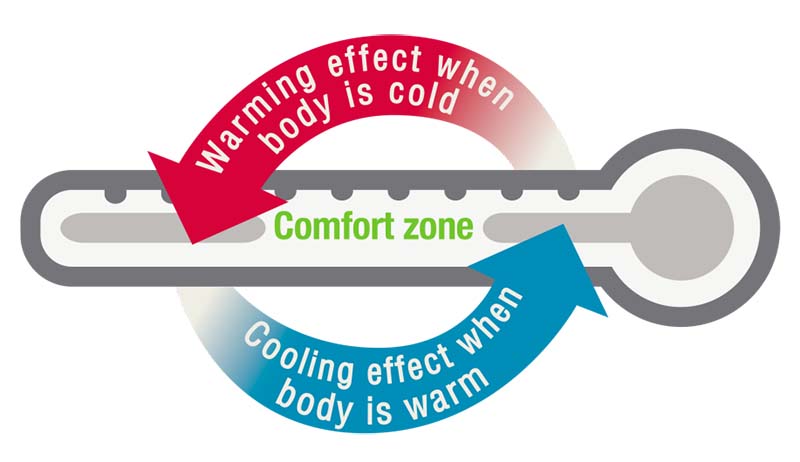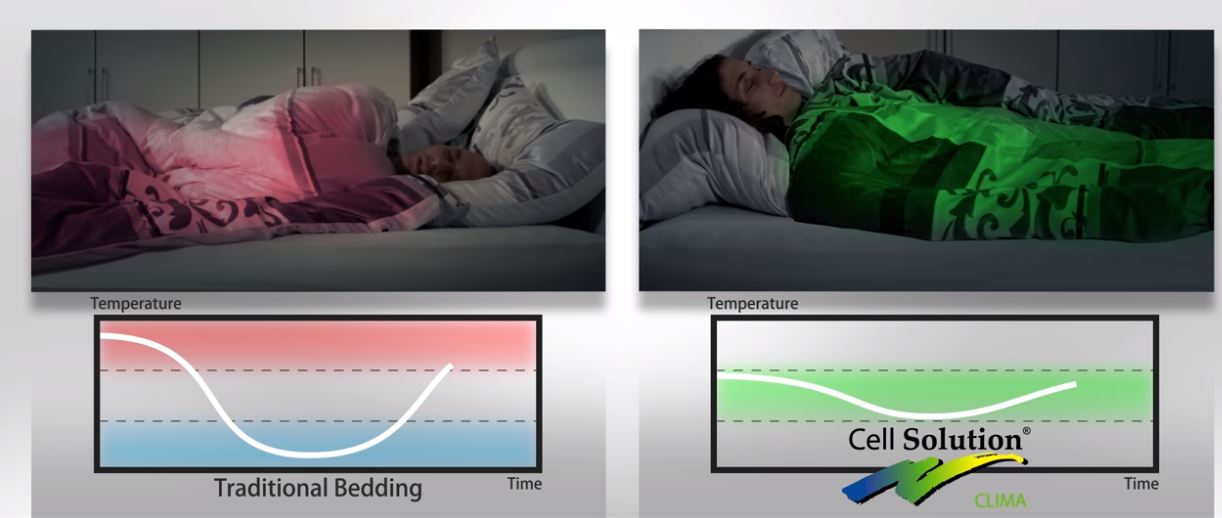What Is Phase Change Material?
Phase Change Material (PCM) is a substance with high heat fusion that is capable of storing and releasing large amounts of energy. When doing so, the substance changes state, from a liquid to a solid. PCM is a very common application most commonly used in building insulation where energy storage is required. To prevent rooms from becoming too hot, PCM in the walls absorb heat avoiding a rise in room temperature during the day. At night when temperatures drop the PCM agent solidifies and releases its previously stored heat. PCM does not require electric power, heating, maintenance, or repairs.

PCM in textiles
Nearly 2 decades ago N.A.S.A began looking for a new way to keep astronauts comfortable during extreme heat fluctuations on the moon. With the help of a private research company they were able to develop something called microencapsulated PCM capsules. These essentially microscopic, acrylic capsules were able to provide flexibility and durability to be used in a variety of textile fabrics.
In 2004, PCM was introduced in the Olympics to reduce the core temperature of the athletes with hopes of avoiding heat stroke. After much success, PCM moved into the bedding industry to be used in foam mattresses, comforters, bed sheets, pillows, and other bedding products.

Eli & Elm and PCM
Eli & Elm Whitney Collection Bed Sheet Set, Cooling Mattress Protector, and Cooling Pillow all incorporate eco-friendly phase change material. Using a patented spinning process, small PCM capsules are infused into lyocell fibers within the fabric. During this process no harmful chemicals are added and all solvents are fully absorbed.
When individuals sleep on Eli & Elm products containing PCM, the fabric will absorb any body heat surrounding the bed and absorb the energy. When all the energy is absorbed and the room begins to cool, this energy is released keeping the sleeper warm. This cycle repeats throughout the night. The result is a sleep experience where the individual never sleeps too hot, nor too cold.






















